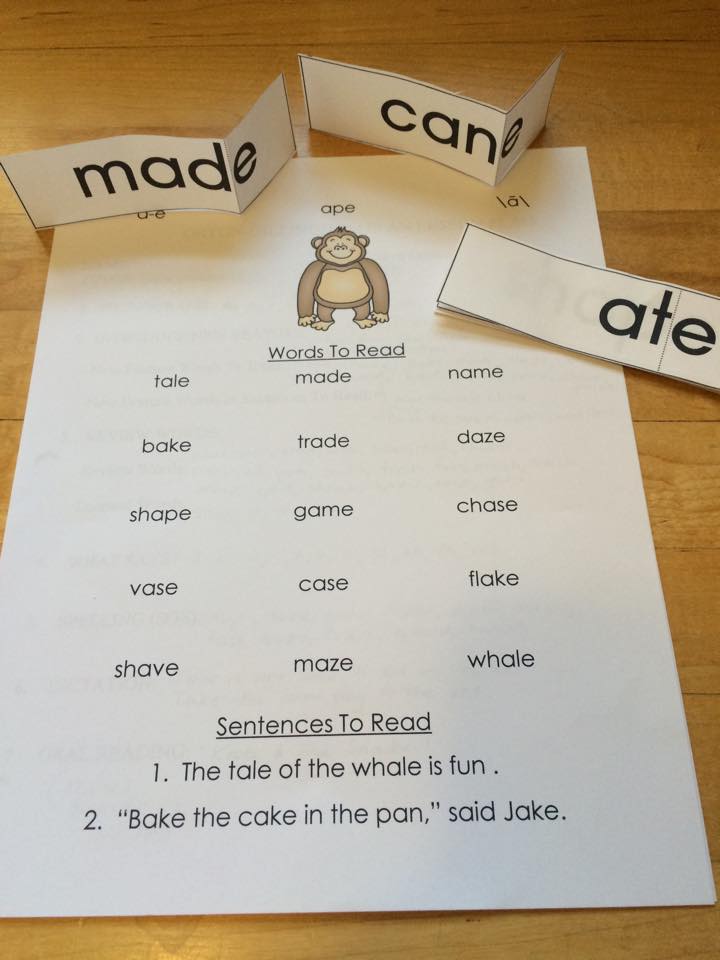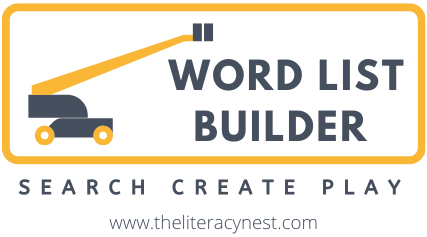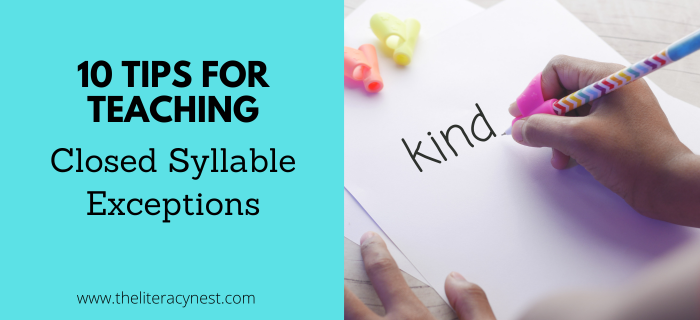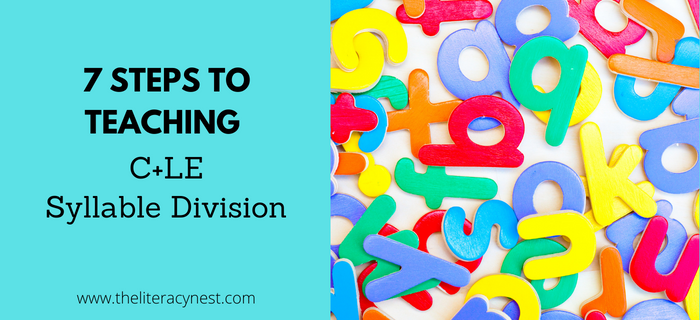The Syllable Series Part 2: The VCe Syllable
This is part two in my six-part syllable series. If you missed part one, click here. To follow along with this series. please download this chart I created on the six syllable types by clicking here. It spells out CLOVER. Each letter in CLOVER stands for a syllable type but is not taught in that order.
Did you grab your copy? Great! Now, let’s proceed!

Word Nerd
My journey as an Orton-Gillingham teacher has made me a total word nerd. Can all the word nerds reading this give me a virtual high five? I am thirsty to know the origins of words. If my husband wants to know what to get me for my birthday, I may suggest a nice book on etymology. Are you feeling me on this one? Feeling (mid-15th century) I feel it necessary to give a little morphology background as we proceed deeper into the syllable types. Once you gain a deeper understanding, we can pass this knowledge along to our kids, who LOVE knowing the history behind words. Trust me. They will eat it up.
Back It Up
I’d like to backtrack a teensy bit and ask you a question. Do your students know what a syllable is?
If you’re taking the time to teach them the types, you’ll want to make sure they have a good working definition that they can recite back verbatim.
A syllable is a word, or a word part with at least one talking vowel. (If it doesn’t have a vowel, then it isn’t a syllable.)
Make sure your kiddos learn that definition inside and out. You can even add hand motions. For instance, when they say at least one taking vowel, have them open and close their hand as if in a talking motion, or pretend your hand is a quacking duck.
Looking for a mini poster of this definition and all the syllable types? Click here.
Why do we have a silent e?
Making a long story very short, most words with silent e either came from words that used to have it pronounced but became silent. This happened in late Middle English and early Modern English. Another large group of words have the silent e to represent a change in the shift from short to long sounds. Many people call it the ‘Magic E’ effect. We have a silent e as one of the many wonderful ways to use the five Latin vowels.
I love to use The Mighty Silent e! by Kimberlee Gard to introduce this concept to my students. With adorable illustrations, helpful examples, and a cute classroom setting, this book teaches spelling and vowel sounds in a new, exciting way that will engage and successfully teach even the most stubborn reader.
To learn more about the history of silent e, read The Many Reasons For Silent E.
What is the VCe syllable and how do I teach it?
The VCe syllable type, or vowel-consonant-E syllable type, is a syllable where the first vowel is long and the final vowel, e, is silent. It is commonly taught after you have taught closed syllables.
1. Introduce it
I introduce one VCe phonogram at a time as a large unit, and then a cumulative review. I start with a-e, then o-e, i-e, u-e, and e-e. The length of time you spend on each one is going to depend on your students.
2. Get hands-on!
I usually begin by having children trace a-e in the sand and say, “a consonant e-ape-a(saying long a).” We’ll do that several times in the sand. If you don’t have sand trays, I highly recommend getting them.
I also like using these folding VCe cards to demonstrate the difference between a closed syllable and a VCe syllable. I am careful to point out that most of the time, they are two different words with different meanings (see examples below).
3. Research
You can take a few words and research the meanings using this online, etymology dictionary and you may be able to trace the steps back to when and how a particular word’s spelling changed over time. For instance, bake came from bakan, time came from tima, and huge came from the old French version, ahuge. When working with younger children, I would recommend spending more time with the decoding and encoding of VCe words and just having a little etymology time. It’s appropriate and engaging to spend more time on the etymology end with older children.
4. Sorts and games
After my intro, we will spend a great deal of time sorting between short and long a words (both picture sorts and word sorts), using magnetic letters, dictation, and reading controlled text with lots of VCe words.
Most importantly, play games. Matching games like concentration and games that involve spelling practice are great choices. The key point I wish to make with this syllable type is to continue multi-sensory instruction and oral, repeated practice.
Use this three-step process whenever children are asked to spell a word during a game or dictation:
Step 1: Student says the word out loud. (Auditory)
Step 2: Student spells the word out loud as they write it. (Visual, auditory, kinesthetic)
Step 3: Student reads the word out loud. (Visual, auditory)
The photos above are taken of materials I have created for teaching VCe and use with my students.
Where can I find out more?
- Still wondering why multisensory instruction is SO important? Read here.
- Read Helpful Strategies For Syllable Division for more syllable practice tips!
- Looking for materials to support multisensory instruction? Find them in my store here.
- For teaching materials to teach the syllable types, look here.
My VCE bundle has essential multisensory practice from start to finish for the long vowels and VCe syllable type. It may be used with Orton-Gillingham lesson plans, online tutoring, and distance learning. It is compatible with Orton-Gillingham methods and pairs well with a structured literacy approach.
Grab yours in The Literacy Nest Shop!
Are you looking for a list of words to use in your Orton-Gillingham lessons? Word List Builder has got you covered!
Save time searching for words to use in your lessons! Create customized and meaningful review, build your folder of words, create templates and games, and much more in Word List Builder.

Do you have a practical way to teach this syllable type? I‘d love to hear about it in the comments below!
Don’t miss part three in this series: The R-Controlled Vowel syllable type!










